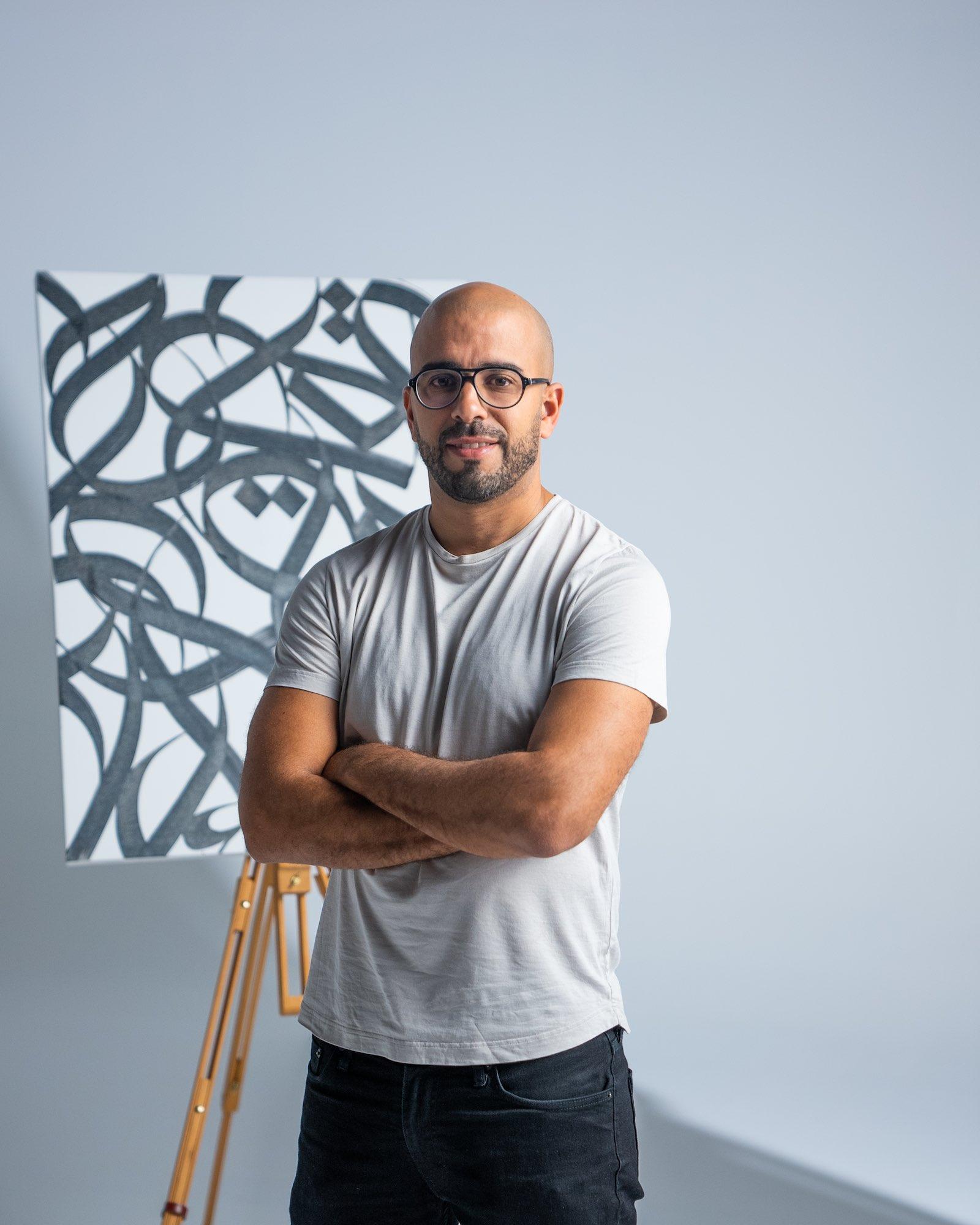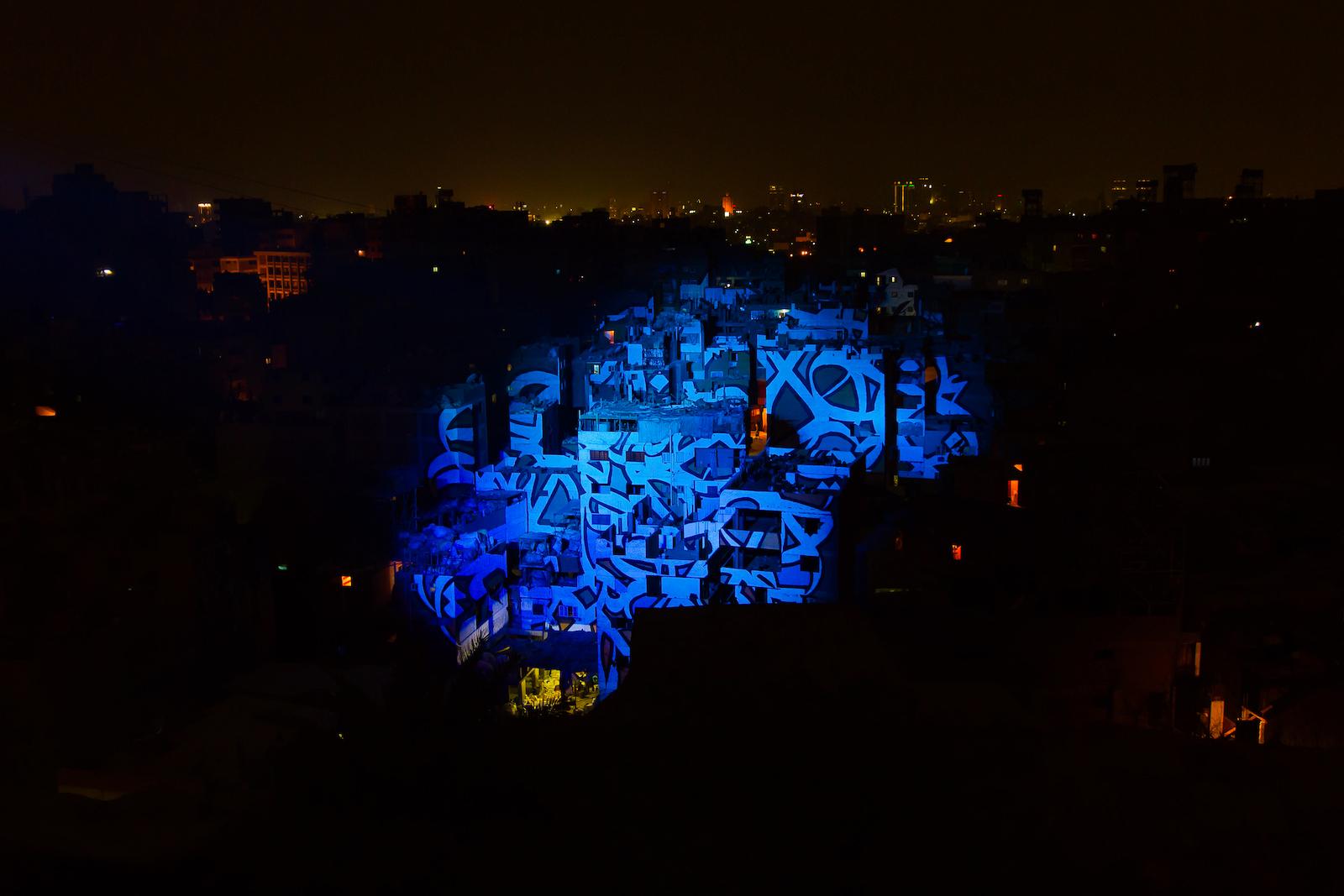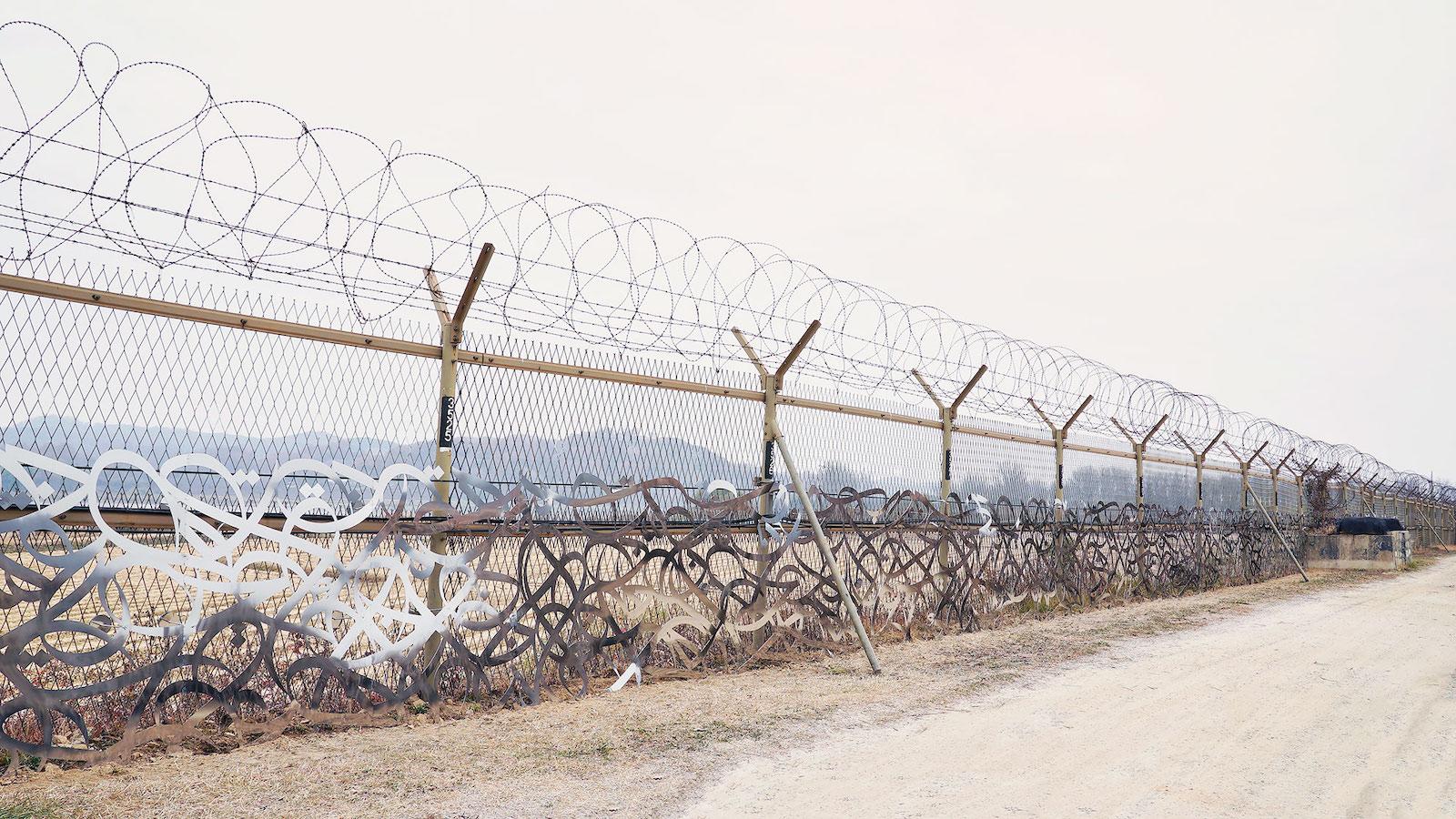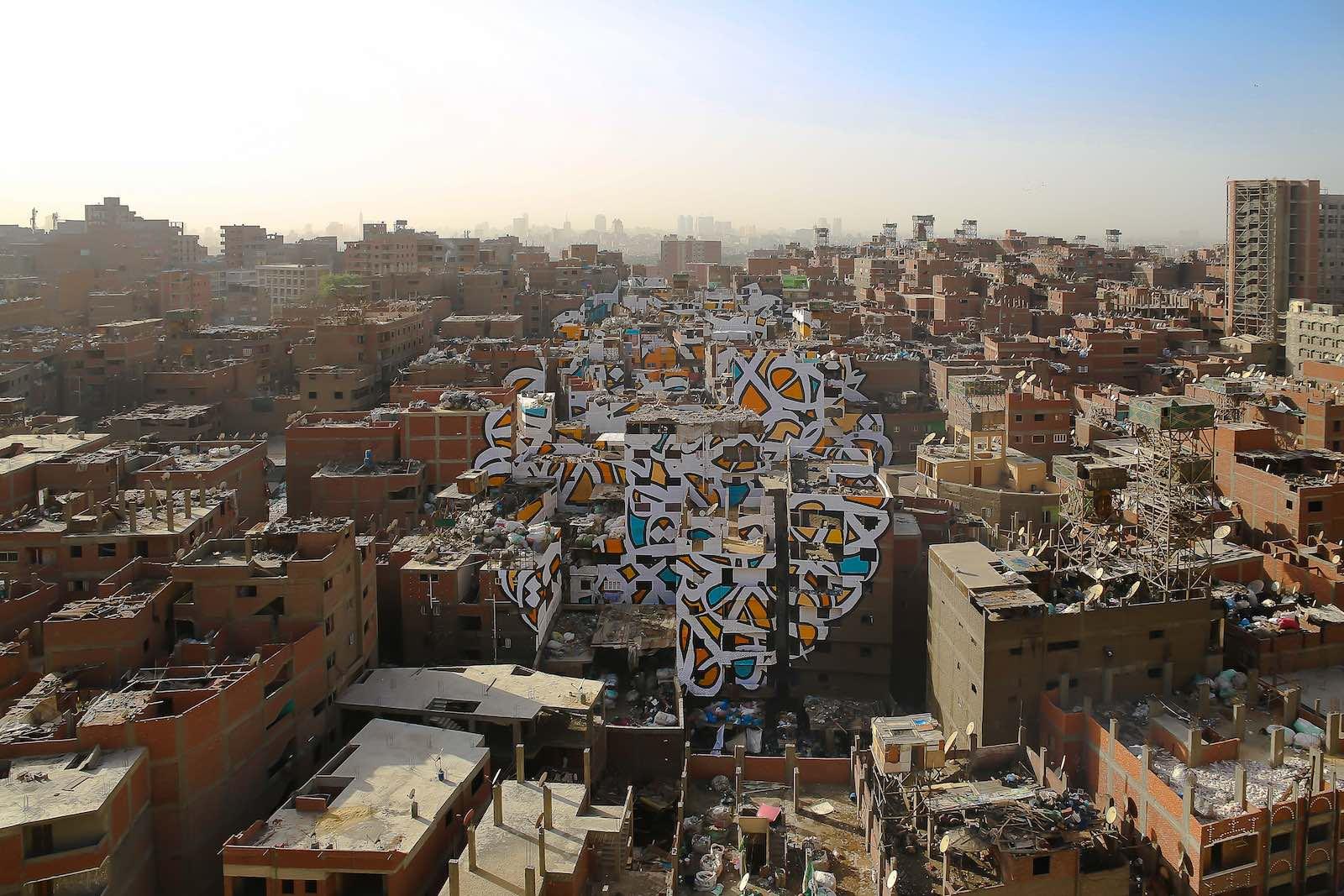Sarah Bochicchio: Language is essential to your work. Could you tell me more about your own experience with language and your experience navigating Arabic and French?
eL Seed: Born in France from Tunisian parents, I was always navigating between languages. Speaking Arabic at home and French outside. Actually, my parents were speaking with my brothers and sister in Tunisian dialect but we used to respond in French. Today, I feel I am trying to carry a tradition. I speak to my parents in Arabic, but they often respond in French.
SB: As a follow-up, I wanted to know: What are you currently reading?
ES: I am reading Leon l’Africain from Amin Maalouf. His books make me travel. I love reading and this is the base of my practice. I used words, quotes from writers. There is a long period of research in my work to find the right words for the right place. Indeed, in every work that I create, there is a message. The message is relevant to the community where I am painting but has a universal dimension so anyone around the world can relate to it.

































